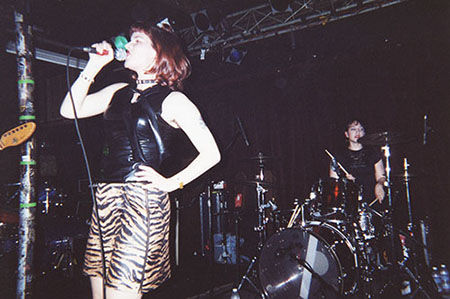Pounding punk baselines and feminist ideals of the early 1990s fill the edgy pages of “Girls to the Front.” This non-fiction compilation of interviews, narratives and photos by Sara Marcus was published in 2010. It focuses on the rise and fall of Riot Grrrl, a grassroots movement of young women, aged approximately 16-25, and their controversial fusion of feminism, punk music and culture.

Amidst the pines of the Pacific Northwest and the urban D.C. Metro area, Marcus shows rather than tells how the bands Bikini Kill and Bratmobile made more than just music. Explorations of the punk scene provide context for the movement and book title. Traditionally, the fronts of punk shows were male-dominated mosh-pits, filled with slam dancing and violence. Women often stood in the back, watching the band from afar. Riot Grrrl broke this mold by stopping shows to get ‘girls to the front’ safely.
Despite the varied texture and use of mixed media, the text is unapologetically dense at times, which may intimidate casual readers. Remaining oriented among the dense footnotes, dates and names can be challenging. Bookmarking the provided postscript, index and notes section is a useful and helpful strategy.
For most readers, the connections between key Riot Grrrl members and other ‘90s cultural icons will be the highlights of the book. During one interview, Kathleen Hannah of Bikini Kill discusses the night she drunkenly spray painted “Kurt Smells like Teen Spirit” on Kurt Cobain’s bedroom wall, inspiring Cobain to write one of Nirvana’s most iconic songs. The inclusion of details like these adds personality to Marcus’ pages. Readers are able to put faces and ideas connected with the movement into context for deeper comprehension.
Through this lens of gender equality and punk culture, Marcus succeeds in logically explaining the movement’s formation, key qualities and players. She traces the action for readers, as the Riot Grrrl’s leaders, successes and failures are evaluated. Marcus strives to accurately cover the spirit and roots of an often misunderstood, and sometimes controversial, movement, something not many other writers would dare to attempt.
Extensive interview footage from the production of “Girls to the Front” and examples of Riot Grrrl’s music are also available on YouTube. The book’s website, www.girlstothefront.com, features some of the video footage that was recorded and used during the making of the project.


























































